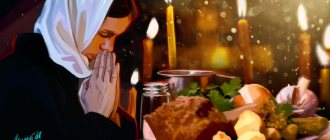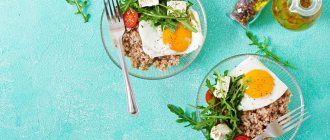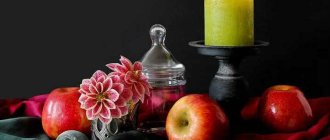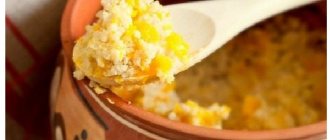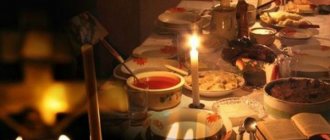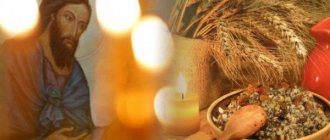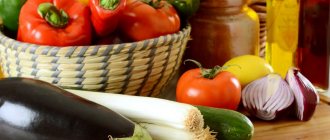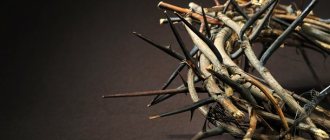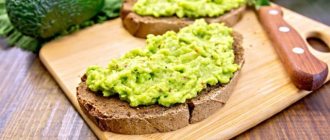A special period for all believers is Lent. At this time, they can prove the strength of their faith, test themselves for the strength of their moral principles and get closer to the asceticism that Orthodoxy preaches. The requirements during this period apply to both the spiritual sphere of life and the physical. This is aimed at multi-level purification of the laity and church ministers: a person must move to a new level in soul and body. The diet that should be followed during Lent is not the result of a blind choice. It is very precisely calculated to promote the spring removal of toxins from the body that have accumulated there over the winter. In addition to improving your health, special nutrition during Lent can have a rejuvenating effect, so sometimes even people who are not believers choose this menu.
Preparing for Lent in 2021
The main preparation for Lent is psychological adjustment. Modern man lives in conditions where all his needs are satisfied almost immediately. Therefore, the strict restrictions imposed by the church these days are perceived by him with particular denial. It is precisely submission to the postulates and demands of Lent that often becomes the most difficult task. Submission and humility are the first things you need to stock up on before you decide to fast.
Those who still decide to hold Lent need to familiarize themselves with the nutritional requirements in advance, since the diet will be very different from the usual. This will be reflected in the list of products that will have to be purchased and in the cost of the daily menu.
TUESDAY
Breakfast: Turkish wheat porridge
Lunch: fresh cabbage salad with apple; lean lentil soup
Afternoon snack: Lenten bread with olive paste
Dinner: green beans
Nutritionist's comment:One of the principles of proper nutrition is variety. This also applies to the grains you cook. |
Start and end dates of Lent
Lent in 2021 will begin on March 15 and will last until May 1 inclusive (until the arrival of Easter, which we celebrate on May 2). Its duration is 48 days, during which time food will comply with special rules.
- The first 40 days are associated with the period that Jesus spent wandering in the desert, having very little food.
- The next 8 days are especially strict, since they are associated with the last stage of Christ’s life before execution, with his torment and suffering.
FRIDAY
Breakfast: sweet pilaf with dried fruits and nuts
Lunch: radish and cucumber salad; carrot soup with crispy chickpeas
Afternoon snack: vertuta with pumpkin
Dinner: cauliflower in the oven
Nutritionist's comment:Cauliflower in the oven is an easy and healthy dish. Cabbage contains ascorbic acid, which is necessary to protect the body from viruses and bacteria. |
Basic Rules
People who intend to fast and maintain the diet prescribed by the canons of the church should adhere to the following rules:
- Nutrition is not the only restriction of Lent. During this time, you should eliminate entertainment events, visits to noisy places and large idle gatherings from your life. This helps to immerse yourself in asceticism, and also removes unnecessary temptations to return to your previous diet.
- You can't flaunt your endurance. A feeling of pride even in oneself is a bad companion during Lent. Changing your diet is not a feat, but an attempt to grow spiritually.
- The first and last seven days are the strictest. During this time, the body adapts to function on fewer calories, and the temptation to give up on your intention may increase.
- Animal products are prohibited for the entire period of Lent.
- In addition to the set of products, you need to pay attention to the overall simplicity of the dishes on the table. Meals should be structured according to this principle: the fewer ingredients in a dish and the simpler it is to prepare, the better.
- The strictest days are Mondays, Wednesdays and Fridays. On these days of the week, all meals consist of one dinner, which should be cold and without vegetable oil.
- Tuesday and Thursday – also only dinner, but warm.
- On weekends, you can relax a little: eat twice and season your dishes with vegetable oil.
- On special days, a little red wine is allowed, but you need to be sure that it is natural.
Other restrictions
Fasting not only requires you to follow a diet. It also implies spiritual abstinence. During this period it is necessary:
- avoid noisy companies and entertainment events;
- exclude visits and receptions at home;
- refuse intimacy.
The days before communion should be spent in constant prayer. According to church rules, the canons to the Lord, the Queen of Heaven and the Guardian Angel must be read. On the day of the ceremony, you cannot eat anything after midnight. In the morning, shortly before the sacrament, it is forbidden to eat food and drink holy water. You should never smoke before the ceremony.
Some categories of laity are temporarily prohibited from confessing and receiving communion. Women who are undergoing their menstrual periods are not allowed to be present in the temple. An exception may be a special situation when it comes to mortal danger or serious illness.
On Sunday, when confession with communion will be held, you must get up at 5–6 o’clock in the morning. That's why it's better to go to bed early on Saturday. On Sunday, before going to church, it is necessary to read the canon of repentance to the Lord Jesus Christ, the canon for communion, as well as prayer texts from the prayer book.
Allowed foods during Lent
- Vegetables and fruits. These products are the basis of a lean diet. Vegetables are used to prepare salads, main courses, appetizers and side dishes. Fruits become an excellent alternative to dessert and a healthy snack. Their wide variety allows you to make your diet rich and interesting.
- Dried fruits and nuts. Dried apricots, prunes, dates, raisins, walnuts, almonds, cashews will become the main delicacies during fasting. These foods are rich in vitamins, and nuts contain a high percentage of fat and protein. However, do not forget about their high calorie content.
- Cereals. Markets and supermarkets offer a wide variety of cereals: rice, buckwheat, quinoa, corn grits, oatmeal, and wheat derivatives will be an excellent side dish. By seasoning the porridge with honey, dried fruits or nuts, you can get a sweet and satisfying dessert. Cereals are a source of complex carbohydrates, which is responsible for the feeling of fullness and allows you to not feel hungry for a long time.
- Legumes. Soybeans, peas, chickpeas, lentils, beans, beans are an excellent source of protein during fasting. Properly prepared dishes will replace meat products. Those who cannot give up dairy products can diversify their diet with cheeses, milk, and yogurt, which are made from soy. In terms of taste, they are not inferior to products made from dairy raw materials.
- Mushrooms. A valuable source of protein and an alternative to meat. They are eaten raw, dried, salted, stewed, fried, boiled, steamed.
- Fish and seafood. It is allowed only 2 times during Lent - on the Annunciation of the Blessed Virgin Mary and on Palm Sunday. It is better not to fry fish. It is recommended to give preference to stewed, boiled or steamed dishes.
- Vegetable oil. Serves as a source of fats and fat-soluble vitamins. Added as a dressing to salads and side dishes. Allowed on days of non-strict fasting.
- Honey. It is eaten as a dessert, and also added to other dishes: fruit salads, cereals, jelly, compotes, and baked goods.
- Confectionery and bakery products. Allowed are those products for the preparation of which eggs and dairy products are not used.
The basis of the menu will consist of the following products:
- Vegetables and fruits. They can be eaten raw, baked, boiled, stewed or steamed.
- Porridges and cereals. Cooking should only be done with water; milk porridges are not allowed. No oil is added. It is best to boil them until they have a stretchy consistency.
- To supply proteins they eat beans, mushrooms, peanuts and blueberries.
- Bread is only black. You can buy dry bread for dietary nutrition.
THURSDAY
Breakfast: sweet pilaf with dried fruits and nuts
Lunch: soup with tomato paste and noodles; lean beet cutlets
Afternoon snack: vertuta with pumpkin
Dinner: aromatic lentils with vegetables
Nutritionist's comment:Sweet pilaf is a healthy and nutritious dish, and this is how breakfast should be. Replace butter with vegetable oil. Pumpkin is an excellent source of provitamin A and dietary fiber. |
Fish days
Those who fast should know that there are days when they can eat fish. This can be a small piece of low-fat varieties. To determine these dates, you need to refer to the Orthodox calendar for 2021.
Days of Lent when you can afford fish:
- April 7 – Annunciation of the Blessed Virgin Mary;
- April 25 – Palm Sunday.
April 24 - Lazarus Saturday - fish caviar of any kind is allowed. But even on these holidays, you need to remember that the indulgence is insignificant, so the amount of fish or caviar should be small.
WEDNESDAY
Breakfast: Turkish wheat porridge
Lunch: soup with tomato paste and noodles; lean beet cutlets
Afternoon snack: salad with beets, carrots and orange
Dinner: aromatic lentils with vegetables
Nutritionist's comment:Beets contain iron, this is especially important during the fasting period, when animal products are excluded from the diet. Salad with beets, carrots and oranges is an excellent salad rich in vitamins. And pumpkin seeds will provide the dish with healthy fatty acids, vitamin A and zinc. |
What not to eat during Lent
- Meat and all derivative products: sausages, ham, smoked meats.
- Animal fats
- Eggs and products for which they are used.
- Dairy products: milk, kefir, yogurt, sour cream, cheeses, butter
- Foods with intense taste: too salty or sweet foods, spices
- Fish and seafood (except for the Annunciation of the Blessed Virgin Mary and Palm Sunday)
- Fatty sweets: baked goods, chocolate, fast food
- Vegetable oil (allowed only on days of non-strict fasting)
- Alcohol (on non-strict days a little is allowed - up to two glasses)
- You can't overeat
MONDAY
Breakfast: oatmeal with tomatoes and onions
Lunch: cabbage salad with cucumber; lean lentil soup
Afternoon snack: Lenten bread with olive paste
Dinner: green beans
Nutritionist's comment:I would like to start the Lenten menu with a traditional breakfast in an unusual design. Oatmeal contains complex carbohydrates, dietary fiber, vegetable proteins and B vitamins. To maintain health, an adult should consume at least 400 g of vegetables daily (preferably more). Unfortunately, few people can boast of such a diet. One way to enrich your menu with vegetables is light vegetable salads. These salads are “light” both in execution and in terms of calorie content. In addition to vegetable protein, lentils contain folic acid and iron. In the recipe for green beans, butter must be replaced with olive oil. |
Nutrition calendar by day
March 15th
Complete abstinence from food is the highest degree of strictness of fasting, refusal to eat food.
March 16
Dry eating is the consumption of uncooked food of plant origin: bread, water, salt, raw fruits and vegetables, dried fruits, nuts, honey.
March 17
Dry eating is the consumption of uncooked food of plant origin: bread, water, salt, raw fruits and vegetables, dried fruits, nuts, honey.
18th of March
Dry eating is the consumption of uncooked food of plant origin: bread, water, salt, raw fruits and vegetables, dried fruits, nuts, honey.
March 19
Dry eating is the consumption of uncooked food of plant origin: bread, water, salt, raw fruits and vegetables, dried fruits, nuts, honey.
20th of March
Hot food with oil - boiled vegetable foods (porridge, soups, stewed vegetables, mushrooms) with the addition of oil are allowed.
21 March
Hot food with oil - boiled vegetable foods (porridge, soups, stewed vegetables, mushrooms) with the addition of oil are allowed.
March 22
Dry eating is the consumption of uncooked food of plant origin: bread, water, salt, raw fruits and vegetables, dried fruits, nuts, honey.
March 23
Hot food without oil - boiled vegetable food without oil is allowed (porridge, soups, stewed vegetables, mushrooms).
March 24
Dry eating is the consumption of uncooked food of plant origin: bread, water, salt, raw fruits and vegetables, dried fruits, nuts, honey.
March 25
Hot food without oil - boiled vegetable food without oil is allowed (porridge, soups, stewed vegetables, mushrooms).
26 March
Dry eating is the consumption of uncooked food of plant origin: bread, water, salt, raw fruits and vegetables, dried fruits, nuts, honey.
March 27
Hot food with oil - boiled vegetable foods (porridge, soups, stewed vegetables, mushrooms) with the addition of oil are allowed.
March 28
Hot food with oil - boiled vegetable foods (porridge, soups, stewed vegetables, mushrooms) with the addition of oil are allowed.
March 29
Dry eating is the consumption of uncooked food of plant origin: bread, water, salt, raw fruits and vegetables, dried fruits, nuts, honey.
30th of March
Hot food without oil - boiled vegetable food without oil is allowed (porridge, soups, stewed vegetables, mushrooms).
March 31
Dry eating is the consumption of uncooked food of plant origin: bread, water, salt, raw fruits and vegetables, dried fruits, nuts, honey.
April 1
Hot food without oil - boiled vegetable food without oil is allowed (porridge, soups, stewed vegetables, mushrooms).
April 2
Dry eating is the consumption of uncooked food of plant origin: bread, water, salt, raw fruits and vegetables, dried fruits, nuts, honey.
April 3
Hot food with oil - boiled vegetable foods (porridge, soups, stewed vegetables, mushrooms) with the addition of oil are allowed.
April, 4
Hot food with oil - boiled vegetable foods (porridge, soups, stewed vegetables, mushrooms) with the addition of oil are allowed.
5th of April
Dry eating is the consumption of uncooked food of plant origin: bread, water, salt, raw fruits and vegetables, dried fruits, nuts, honey.
April 6
Hot food without oil - boiled vegetable food without oil is allowed (porridge, soups, stewed vegetables, mushrooms).
April 7
Dry eating is the consumption of uncooked food of plant origin: bread, water, salt, raw fruits and vegetables, dried fruits, nuts, honey.
April 8
Hot food without oil - boiled vegetable food without oil is allowed (porridge, soups, stewed vegetables, mushrooms).
April 9
Dry eating is the consumption of uncooked food of plant origin: bread, water, salt, raw fruits and vegetables, dried fruits, nuts, honey.
April 10th
Hot food with oil - boiled vegetable foods (porridge, soups, stewed vegetables, mushrooms) with the addition of oil are allowed.
11 April
Hot food with oil - boiled vegetable foods (porridge, soups, stewed vegetables, mushrooms) with the addition of oil are allowed.
12th of April
Dry eating is the consumption of uncooked food of plant origin: bread, water, salt, raw fruits and vegetables, dried fruits, nuts, honey.
April 13
Hot food without oil - boiled vegetable food without oil is allowed (porridge, soups, stewed vegetables, mushrooms).
14th of April
Dry eating is the consumption of uncooked food of plant origin: bread, water, salt, raw fruits and vegetables, dried fruits, nuts, honey.
April 15
Hot food without oil - boiled vegetable food without oil is allowed (porridge, soups, stewed vegetables, mushrooms).
April 16
Dry eating is the consumption of uncooked food of plant origin: bread, water, salt, raw fruits and vegetables, dried fruits, nuts, honey.
April 17
Hot food with oil - boiled vegetable foods (porridge, soups, stewed vegetables, mushrooms) with the addition of oil are allowed.
April 18th
Hot food with oil - boiled vegetable foods (porridge, soups, stewed vegetables, mushrooms) with the addition of oil are allowed.
April 19
Dry eating is the consumption of uncooked food of plant origin: bread, water, salt, raw fruits and vegetables, dried fruits, nuts, honey.
20 April
Hot food without oil - boiled vegetable food without oil is allowed (porridge, soups, stewed vegetables, mushrooms).
April 21
Dry eating is the consumption of uncooked food of plant origin: bread, water, salt, raw fruits and vegetables, dried fruits, nuts, honey.
April 22
Hot food without oil - boiled vegetable food without oil is allowed (porridge, soups, stewed vegetables, mushrooms).
April 23
Dry eating is the consumption of uncooked food of plant origin: bread, water, salt, raw fruits and vegetables, dried fruits, nuts, honey.
April 24
Lazarev Saturday
Fish caviar – consumption of fish caviar, boiled plant foods (porridge, soups, stewed vegetables, mushrooms) with the addition of oil is allowed.
25th of April
Palm Sunday
Fish – you are allowed to enjoy fish and seafood dishes.
26 April
Dry eating is the consumption of uncooked food of plant origin: bread, water, salt, raw fruits and vegetables, dried fruits, nuts, honey.
April 27
Dry eating is the consumption of uncooked food of plant origin: bread, water, salt, raw fruits and vegetables, dried fruits, nuts, honey.
April 28
Dry eating is the consumption of uncooked food of plant origin: bread, water, salt, raw fruits and vegetables, dried fruits, nuts, honey.
April 29
Dry eating is the consumption of uncooked food of plant origin: bread, water, salt, raw fruits and vegetables, dried fruits, nuts, honey.
April 30
Dry eating is the consumption of uncooked food of plant origin: bread, water, salt, raw fruits and vegetables, dried fruits, nuts, honey.
1st of May
Dry eating is the consumption of uncooked food of plant origin: bread, water, salt, raw fruits and vegetables, dried fruits, nuts, honey.
SUNDAY
Breakfast: lentil pate on sandwiches
Lunch: gazpacho; lean carrot cutlets
Afternoon snack: baked apples with raisins, nuts and honey
Dinner: lahanorizo
Nutritionist's comment:Tomatoes contain a powerful antioxidant - lycopene. What is important is that tomatoes that have been subjected to heat treatment contain this substance in larger quantities. Baked fruits are tasty, healthy and not high in calories at all. Perhaps the best dessert options. |
This Lenten menu was compiled taking into account the principles of the “Menu of the Week” system.
history of the holiday
Despite the fact that Lazarus Saturday and the Entry of the Lord into Jerusalem are celebrated by the church for two days in a row, a month or two actually passed between these events. According to the Gospel of John, Christ, on his way to Jerusalem, visited the house of his friends in the village of Bethany, who received him more than once - Martha, her sister Mary and brother Lazarus. He received news from his sisters that his friend Lazarus was sick.
Hearing this, Jesus said: “This sickness is not for death, but for the glory of God, so that the Son of God may be glorified through it.” Jesus loved Martha and her sister and Lazarus. And when he heard that Lazarus was sick, He remained for two days in the place where He was.
When Jesus reached Bethany, it turned out that his friend Lazarus had already died four days ago. Christ hurried to the tomb of his dead friend, asking Martha along the way: “I am the resurrection and the life; He who believes in Me, even if he dies, will live. And everyone who lives and believes in Me will never die. Do you believe this? Martha answered without hesitation: “Lord! I believe that You are the Christ, the Son of God, coming into the world.”
The people around him rolled away the stone that covered the tomb, and Jesus began to pray: “Father! Thank You that You heard Me. I knew that You would always hear Me; But I said this for the sake of the people standing around, so that they might believe that You sent Me.” Having said this, he cried out in a loud voice: “Lazarus, come out!”
And the dead man came out, entwined on his hands and feet with burial cloths, and his face was tied with a scarf. Jesus says to them: “Untie him, let him go.” Then many of the Jews who came to Mary and saw what Jesus had done believed in Him.
The Raising of Lazarus, Pieter Lastman, 1622
The resurrection of Lazarus is revered as one of the most important miracles performed by Christ. It was with him that both the people's love for him and the hatred of the rulers of Judea began. From that day on they “decided to kill Him.” Lazarus Saturday became a church holiday already in the 4th century, and in the 8th century special holiday hymns and canons were compiled, which are still sung today.
After the resurrection, Lazarus lived another 30 years, he became a priest and preached the Christian faith in Cyprus, in the city of Kition, which is now called Larnaca. At the end of the 9th - beginning of the 10th century, the Church of St. Lazarus was built over the tomb of Lazarus in Cyprus.
